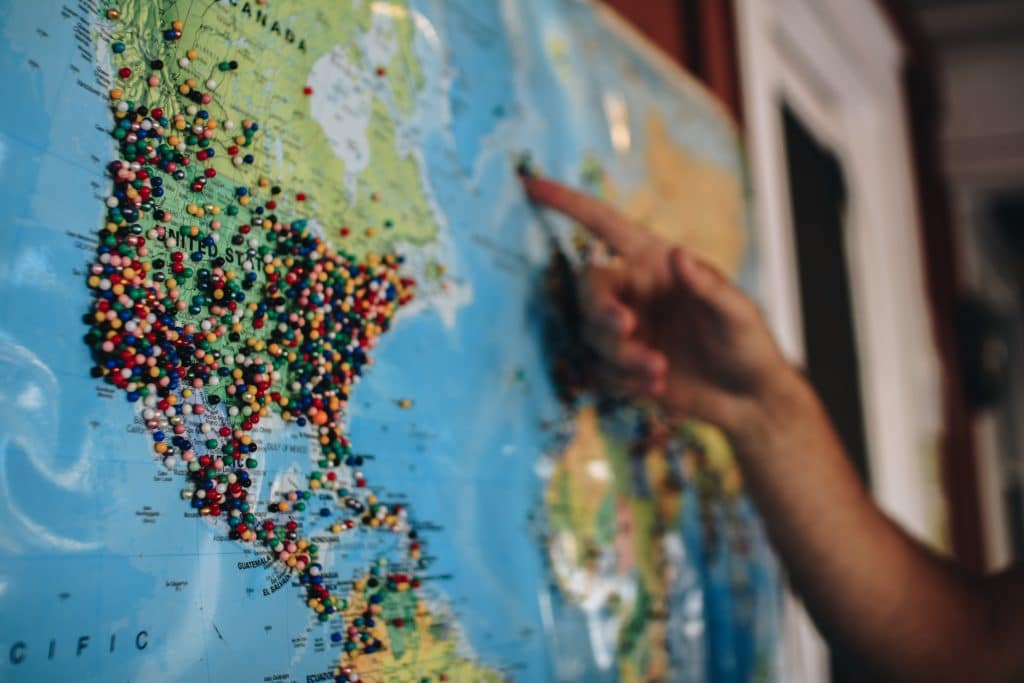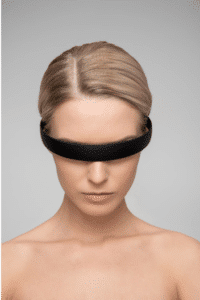
Parents in my practice and GetKidsInternetSafe subscribers commonly ask me about the impact of pornography on kids. They comment on how different today’s world is from when we were young. Most people even assume that kids today are more promiscuous than we were. But here is what you may be surprised to learn: even though today’s teens demonstrate more acceptance of casual and what we used to consider deviant sexual practices (like oral sex, anal sex, same-gender sex, and polyamory), teens are more sexually responsible than previous generations. In fact, despite popular misconceptions that teens are hooking up casually, the truth is they are “talking” more than dating and having sex later and with fewer partners than previous generations. They are also more likely to use contraception, resulting in teen pregnancy rates being at an all-time low. That gives me hope that, because of American’s more casual attitude toward sex, we are doing a better job at sex education and supervision. To that end, I’ve included this section of my book, Screen Time in the Mean Time: A Parenting Guide to Get Kids and Teens Internet Safe, free for GKIS blog readers. Hang on to your hats parents, no matter how open-minded you are, you are likely to find some of this information concerning and IMPORTANT!
Online pornography is popular and easily available. We don’t know how popular it actually is though, because a large number of pornography websites are reticent to share traffic numbers. Best estimates are that 13% of web searches are for online pornography.[i] What we do know is that the number of viewers and time spent viewing is growing. A particularly popular single pornographic site, Pornhub’s 2018 Year in Review reported:
“Visits to Pornhub totaled 33.5 billion over the course of 2018, an increase of 5 billion visits over 2017. That equates to a daily average of 92 million visitors and at the time of this writing, Pornhub’s daily visits now exceed 100 million. To put that into perspective, that’s as if the combined populations of Canada, Poland and Australia all visited Pornhub every day! …When they’re not busy watching videos, Pornhub’s users enjoy socializing, with nearly 64 million private messages sent and 7.9 million video comments left. … More than 141 million people took the time to vote for their favorite videos, which incidentally is more people than voted in the last U.S. presidential election.… Once again, the United States continues to be the country with the highest daily traffic to Pornhub, followed by the United Kingdom, India, Japan, Canada, France, and Germany.”[ii]

With popularity and ease of access through mobile screens and gaming consoles, many kids and teens intentionally seek and are being accidentally exposed to, inappropriate sexual images and videos. Based on a set of EU studies, Kierkegaard (2008) states that children have access to Internet pornography at the average age of eleven years old.[iv] Not only are kids and teens seeking sexual content for titillation, but many kids are also relying on online pornography as their primary source of sexual education.[v] Alarmingly, I am seeing more and more kids intentionally seeking pornographic content and creating and exchanging nude images and videos. How often are children viewing porn, and, when they do, what kinds of harm may result from that exposure?
Estimates from research studies vary widely, most suggesting that a minority of adolescents actually access online pornography.[vi] However, in one study conducted in 2008 with 562 undergraduates, 93% of boys and 62% of girls reported that they were exposed to pornography during adolescence.[vii] In my clinical experience, it is quite common due to unfiltered smartphone and tablet use among younger children. Studies show that kids tend to consider what they see online as attractive, normative, and risk-free and may go as far as emulating it.[viii][ix] The online worlds of MMORPGs increasingly feature virtual sexual assault and pornographic behaviors, and popular television series deliver increasingly violent content and explicit themes.
Who is most at risk for online pornography consumption?
The typical adolescent online pornography user is a boy who is more pubertally advanced, a sensation-seeker, and has weak or troubled family relations.[x] Boys are more likely to be exposed at an earlier age, to see more images, to see more extreme images (e.g., rape, child pornography), and to view pornography more often; while girls reported more involuntary exposure.[xi]Statistics demonstrate that female viewing is going up every year. Pornhub’s 2018 Year in Review report stated, “2018 saw the proportion of female visitors to Pornhub grow to 29%, an increase of 3 percentage points over 2017.”[xii] Depression and rule-breaking are also risk factors.[xiii][xiv]
What affects does viewing pornography have on kids?
Research demonstrates that pornography use among children, teens, or adults has been associated with:
- Cynical attitudes about intimacy, fidelity, and love[xv]
- Stronger gender-stereotypical sexual beliefs[xvi]
- Desensitization and habituation with explicit content, meaning the user’s appetite changes over time from less extreme to more extreme forms of pornography to get the same intensity of enjoyment. This also validates deviant sex practices and potentially lowers inhibitions to engage in inappropriate sexual interactions online and offline[xvii]
- Attitudes supporting violence against women[xviii]
- More permissive sexual attitudes, especially in regard to the place of sex in relationships[xix][xx][xxi]
- Greater experience with casual sexual behavior[xxii][xxiii]
- Earlier sexual intercourse[xxiv]
- More sexual aggression, both in terms of perpetration and victimization[xxv]
- Three times more sexually aggressive behavior when exposed to nonviolent porn[xxvi]
- Twenty-four times more sexually aggressive behavior when exposed to violent porn[xxvii]
- A clinically impairing addiction, called Hypersexual Disorder.
Causal research would require purposely exposing children to pornographic content. Because that is not safe or ethical, all research studies about child exposure to online pornography are correlational. We cannot conclusively say whether online pornography causes certain attitudes or behaviors. Obviously, the correlation findings quoted above are concerning. Blocking kids from online pornography is common sense. Not only is viewing pornography an issue, but more active sexual role playing online also makes kids vulnerable to sexual predators. These attitudes and behaviors are impactful in the short term and may also lead to problematic life-long trauma and intimacy issues.[xxviii]
If this information is useful to you, please share it with friends and family. Too many of us bury our heads to the reality of online pornography and child access. There’s so much to know! If you are looking for a one-source guide to screen risk, benefit, and the parenting strategies that can strengthen your parent-child relationship while keeping them safer, pick up a copy of Screen Time in the Mean Time on Amazon. And for a step-by-step guide to setting up your home for enrichment and screen safety, you won’t want to miss my Connected Family Course. Parents tell me all the time how much they’ve appreciated having the information for prevention rather than hearing it AFTER they end up in my psychology office. Education matters!
I’m the mom psychologist who helps you GetKidsInternetSafe.
Onward to More Awesome Parenting,
Dr. Tracy Bennett
Works Cited
[i]http://www.forbes.com/sites/julieruvolo/2011/09/07/how-much-of-the-internet-is-actually-for-porn/#434a4de761f7
[ii]https://www.pornhub.com/insights/2018-year-in-review#us
[iii]Brown, J., & L’Engle, K. (2009). “X-Rated: Sexual Attitudes & Behaviors Associated with U.S. Early Adolescents’ Exposure to Sexually Explicit Media.” Communication Research36, 129, 133.
[iv]Kierkegaard, S. (2008). Cybering, online grooming & age-play. Computer Law & Security Report, 24(1), 41–55.
[v]Kanuga, M. & Rosenfeld, W. (2004). “Adolescent Sexuality & the Internet: The Good, the Bad, & the URL.” Journal of Pediatrics & Adolescent Gynecology17, 117, 120
[vi]Peter, J., & Valkenburg, P. (2016): Adolescents & Pornography: A Review of 20 Years of Research, The Journal of Sex Research, DOI: 10.1080/00224499.2016.1143441
[vii]Sabina, Chiara, et al. “The Nature and Dynamics of Internet Pornography Exposure for Youth.” CyberPsychology & Behavior, vol. 11, no. 6, 2008, pp. 691–693., doi:10.1089/cpb.2007.0179.
[viii]Rich, M. (2005). “Sex Screen: The Dilemma of Media Exposure & Sexual Behavior.” Pediatrics116, 329, 330.
[ix]Zillmann, D. (2000). “Influence of Unrestrained Access to Erotica on Adolescents’ & Young Adults’ Dispositions Towards Sexuality.”Journal of Adolescent Health27, 41, 42.
[x]Peter, J. & Valkenburg, P. (2016): Adolescents & Pornography: A Review of 20 Years of Research, The Journal of Sex Research,DOI: 10.1080/00224499.2016.1143441
[xi]Sabina, Chiara, et al. “The Nature and Dynamics of Internet Pornography Exposure for Youth.” CyberPsychology & Behavior, vol. 11, no. 6, 2008, pp. 691–693., doi:10.1089/cpb.2007.0179.
[xii]https://www.pornhub.com/insights/2018-year-in-review#us
[xiii]Wolak, J., Mitchell, K., & Finkelhor. D. (2007). “Unwanted & Wanted Exposure to Online Pornography in a National Sample of Youth Internet Users.” Pediatrics119.2: 247-57. Web.
[xiv]Ybarra, M., et al. (2011). “X-Rated Material & Perpetration of Sexually Aggressive Behavior Among Children & Adolescents: Is There a Link?” Aggressive Behavior37, 1, 3, 7.
[xv]Zillmann, D. (2000). “Influence of Unrestrained Access to Erotica on Adolescents’ & Young Adults’ Dispositions Towards Sexuality.”Journal of Adolescent Health27, 41, 42.
[xvi]Peter, J. & Valkenburg, P. (2016): Adolescents & Pornography: A Review of 20 Years of Research, The Journal of Sex Research, DOI: 10.1080/00224499.2016.1143441
[xvii]Zillmann, D. (2000). “Influence of Unrestrained Access to Erotica on Adolescents’ & Young Adults’ Dispositions Towards Sexuality.”Journal of Adolescent Health27, 41, 42.
[xviii]Hald, Gert, Martin, et al. (2009). “Pornography & Attitudes Supporting Violence Against Women: Revisiting the Relationship in Nonexperimental Studies.” Aggressive Behavior35, 1, 3, 5.
[xix]Peter, J., Valkenburg, P., & Schouten, A. (2006). Characteristics & motives of adolescents talking with strangers on the Internet. Cyberpsychology & Behavior, 9, 526–530.
[xx]Peter, J. & Valkenburg, P. (2016): Adolescents & Pornography: A Review of 20 Years of Research, The Journal of Sex Research, DOI: 10.1080/00224499.2016.1143441
[xxi]Zillmann, D. (2000). “Influence of Unrestrained Access to Erotica on Adolescents’ & Young Adults’ Dispositions Towards Sexuality.”Journal of Adolescent Health27, 41, 42.
[xxii]Peter, J. & Valkenburg, P. (2016): Adolescents & Pornography: A Review of 20 Years of Research, The Journal of Sex Research, DOI: 10.1080/00224499.2016.1143441
[xxiii]Zillmann, D. (2000). “Influence of Unrestrained Access to Erotica on Adolescents’ & Young Adults’ Dispositions Towards Sexuality.”Journal of Adolescent Health27, 41, 42.
[xxiv]Peter, J. & Valkenburg, P. (2016): Adolescents & Pornography: A Review of 20 Years of Research, The Journal of Sex Research, DOI: 10.1080/00224499.2016.1143441
[xxv]Peter, J. & Valkenburg, P. (2016): Adolescents & Pornography: A Review of 20 Years of Research, The Journal of Sex Research, DOI: 10.1080/00224499.2016.1143441
[xxvi]Ybarra, M., et al. (2011). “X-Rated Material & Perpetration of Sexually Aggressive Behavior Among Children & Adolescents: Is There a Link?” Aggressive Behavior37, 1, 3, 7.
[xxvii]Ybarra, M., et al. (2011). “X-Rated Material & Perpetration of Sexually Aggressive Behavior Among Children & Adolescents: Is There a Link?” Aggressive Behavior37, 1, 3, 7.
[xxviii]Villani, S. (2001). “Impact of Media on Children & Adolescents: A 10-Year Review of the Research.”Journal of the American Academy of Child & Adolescent Psychiatry40, 392, 399.
Photo Credits
Photo by pawel szvmanski on Unsplash
Photo by AC De Leon on Unsplash









